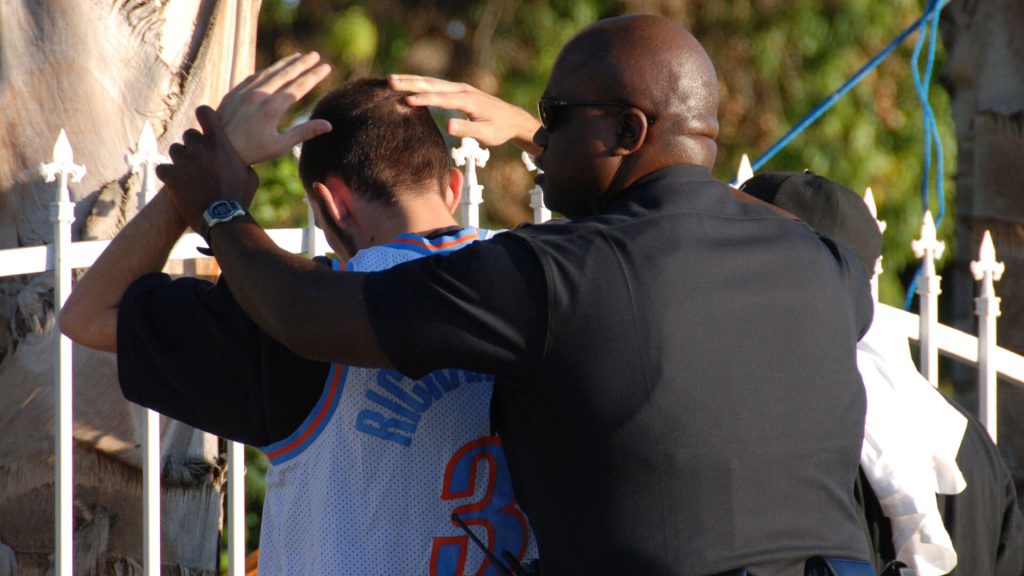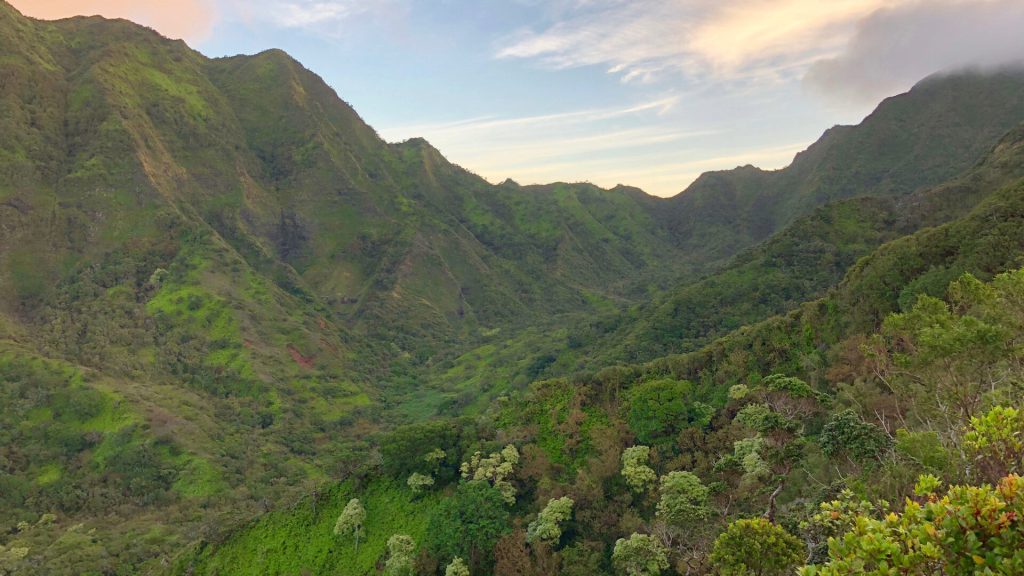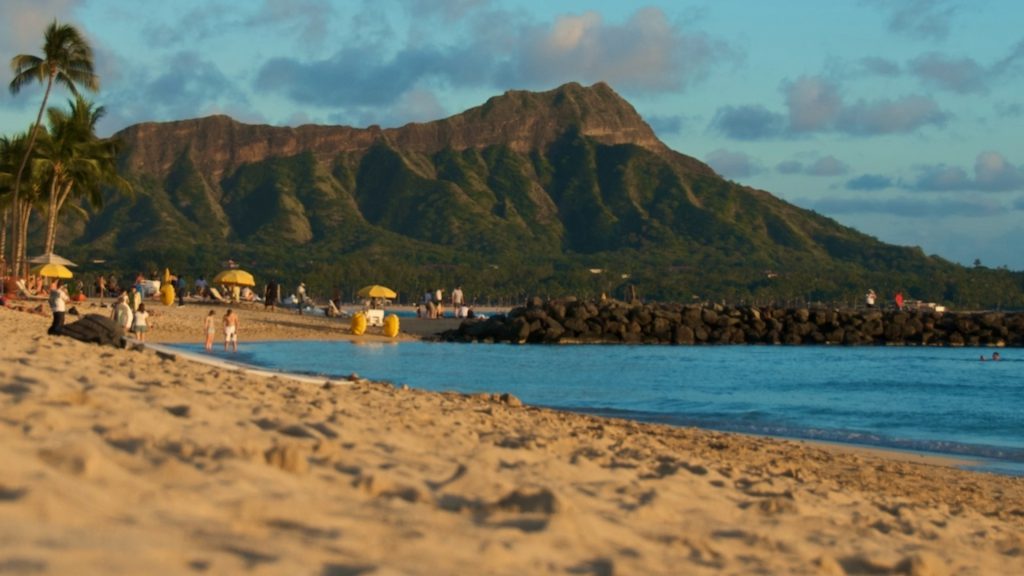Hawaii, a paradise known for its stunning beaches and awe-inspiring volcanoes, attracts millions of tourists each year. However, one popular attraction, the Haiku Stairs, is set to be removed after tourists have repeatedly defied a long-standing ban, putting their safety and the tranquility of the local community at risk.
The Haiku Stairs: A Stairway to Controversy
The Haiku Stairs, a once-popular attraction that drew up to 20,000 visitors annually, has been closed to the public since 1987 due to safety concerns. Despite numerous “no trespassing” signs and the stairs’ notorious steepness, thrill-seekers have continued to seek out the breathtaking views, disregarding the ban and putting themselves in danger.

The stairs, built by the US Navy in 1942 to access a top-secret radio facility, have become a source of frustration for local authorities. Tourists’ relentless pursuit of the perfect view has led to numerous arrests, citations, and even tragic accidents, like the death of comedian Fritz Hasenpusch in 2012.
Tourists’ Defiance Leads to Drastic Measures
Despite the closure of the Haiku Stairs, officials have struggled to enforce the ban effectively. In recent years, the number of trespassing incidents has continued to rise, with five arrests and 60 warnings issued just last week. The ongoing defiance has left local authorities no choice but to take drastic action.

The Honolulu City Council has confirmed that the Haiku Stairs will be removed at the end of April, citing the stairs as a significant liability and expense for the city. The decision aims to prioritize public safety, stop illegal trespassing, and improve the quality of life for nearby residents who have endured decades of disruptions.
The High Cost of Removal
Removing the Haiku Stairs is no small feat, with the project estimated to take at least six months and cost a staggering $2.5 million. The decision to remove the stairs, however, is not just about the financial burden; it’s about respecting the land, the local community, and the cultural significance of the area.

Mayor Blangiardi emphasized that the decision was made with respect for the residents living near the stairs’ entrance, the ʻāina (land and sea), and the past and future history of the Haʻikū community’s culture. The removal of the stairs is seen as a necessary step to preserve the natural beauty and condition of the area.
Alternative Routes, Equal Risks
Hikers’ determination to reach the stunning viewpoint has not been limited to the Haiku Stairs themselves. Many have attempted to access the area via the Moanalua Ridge, a longer and more treacherous terrain. This alternative route has led to numerous rescue missions by local authorities, further straining resources and putting lives at risk.

The removal of the Haiku Stairs serves as a stark reminder that the pursuit of the perfect view should never come at the cost of personal safety or the well-being of local communities. As Hawaii takes steps to address this issue, tourists must respect the laws and regulations put in place to protect both people and the environment.
Overtourism: A Growing Concern
The decision to remove the Haiku Stairs is not an isolated incident; it’s part of a larger trend of over-tourism affecting popular destinations worldwide. In Japan, the town of Fujikawaguchiko is grappling with a similar issue, as tourists flock to a specific spot outside a convenience store to snap photos of Mount Fuji.

To combat the overwhelming influx of visitors, local authorities in Fujikawaguchiko plan to install a mesh net measuring 2.5 meters (8ft) and spanning 20 meters to obstruct the view. This measure aims to discourage tourists from congregating in the area and disrupting the daily lives of residents.
Balancing Tourism and Sustainability
As the world becomes increasingly connected and travel becomes more accessible, the challenge of balancing tourism and sustainability has never been more pressing. The removal of the Haiku Stairs and the measures taken in Fujikawaguchiko serve as reminders that the pursuit of the perfect photo or the ultimate thrill must be tempered with respect for local communities and the environment.

It is the responsibility of both tourists and local authorities to work together to find sustainable solutions that allow for the enjoyment of natural wonders without compromising the well-being of the people and places that call these destinations home. By fostering a culture of responsible tourism, we can ensure that the world’s most beautiful and iconic locations remain accessible and pristine for generations to come.
The Legacy of the Haiku Stairs
As the Haiku Stairs face their final days, it’s essential to reflect on the legacy they leave behind. Built as a means to access a top-secret military facility, the stairs have become a symbol of human ingenuity, perseverance, and the allure of the unknown. The stunning views they offer have captivated the hearts and minds of countless adventurers over the years.

However, the stairs’ legacy is also one of caution, reminding us that the pursuit of adventure must be balanced with respect for the environment and the communities that call these places home. As we bid farewell to the Haiku Stairs, let us remember the lessons they have taught us and strive to be more responsible stewards of the world’s natural wonders.
The Future of Responsible Tourism
The removal of the Haiku Stairs marks a turning point in the conversation surrounding responsible tourism. As popular destinations grapple with the challenges of overtourism, it’s clear that a new approach is needed – one that prioritizes sustainability, respect for local communities, and the preservation of natural beauty.

Moving forward, both tourists and the travel industry must embrace this new paradigm. By promoting sustainable practices, supporting local economies, and educating visitors about the importance of respecting the environment and local cultures, we can create a future where tourism and preservation go hand in hand.
Honoring Hawaii’s Natural Wonders
Hawaii, with its breathtaking landscapes and vibrant culture, has long been a magnet for tourists seeking paradise. As the state grapples with the challenges of overtourism, it’s essential to remember that the true essence of Hawaii lies not in any single attraction, but in the rich tapestry of its natural wonders and the spirit of its people.

By focusing on sustainable, culturally sensitive tourism practices, Hawaii can continue to welcome visitors while preserving the very things that make it so special. From the majestic volcanoes to the crystal-clear waters, the islands’ natural beauty is a treasure that must be cherished and protected for generations to come.
A Call to Action for Tourists
As the story of the reaches its conclusion, it serves as a powerful reminder of the role that every tourist plays in shaping the future of travel. By making conscious choices and prioritizing responsible tourism practices, we can all contribute to a world where the beauty of places like Hawaii can be enjoyed without compromising their integrity.

Whether it’s respecting local customs, supporting eco-friendly businesses, or simply being mindful of our impact on the environment, every action counts. By embracing this mindset, we can ensure that the world’s most cherished destinations remain vibrant, sustainable, and accessible for generations to come.
Lessons from the Haiku Stairs
The tale of the Haiku Stairs resonates far beyond the shores of Hawaii. It speaks to the global challenge of balancing tourism with preservation, and the need for a fundamental shift in the way we approach travel. As we reflect on the lessons learned from this iconic attraction, it’s clear that change is not only necessary but urgent.

From the mountains of Machu Picchu to the streets of Venice, destinations around the world are grappling with the impacts of overtourism. By heeding the warnings of the Haiku Stairs and embracing a more sustainable, responsible approach to travel, we can help ensure that these precious places endure for generations to come.
Collaboration: The Key to Sustainable Tourism
As the world navigates the challenges of overtourism, it’s becoming increasingly clear that no single entity can solve this complex issue alone. Governments, local communities, the travel industry, and tourists themselves must all work together to find sustainable solutions that balance the needs of all stakeholders.

By fostering open communication, sharing best practices, and working towards common goals, we can create a future where tourism is a force for good – one that supports local economies, preserves cultural heritage, and protects the environment. The removal of the Haiku Stairs is a poignant reminder of the work that lies ahead, but it’s also a testament to the power of collaboration and the resilience of the human spirit.
Hawaii: A Beacon of Hope
As Hawaii takes the bold step of removing the Haiku Stairs, it sets an example for destinations around the world grappling with the challenges of overtourism. By prioritizing the well-being of its communities and the preservation of its natural wonders, the state is demonstrating that a more sustainable, responsible approach to tourism is not only possible but necessary.

In the face of adversity, Hawaii has chosen to lead by example, showing that difficult decisions and sacrifices must sometimes be made in the name of protecting what matters most. As the world watches, let us draw inspiration from Hawaii’s courage and commitment, and work together to build a future where tourism and preservation go hand in hand.






